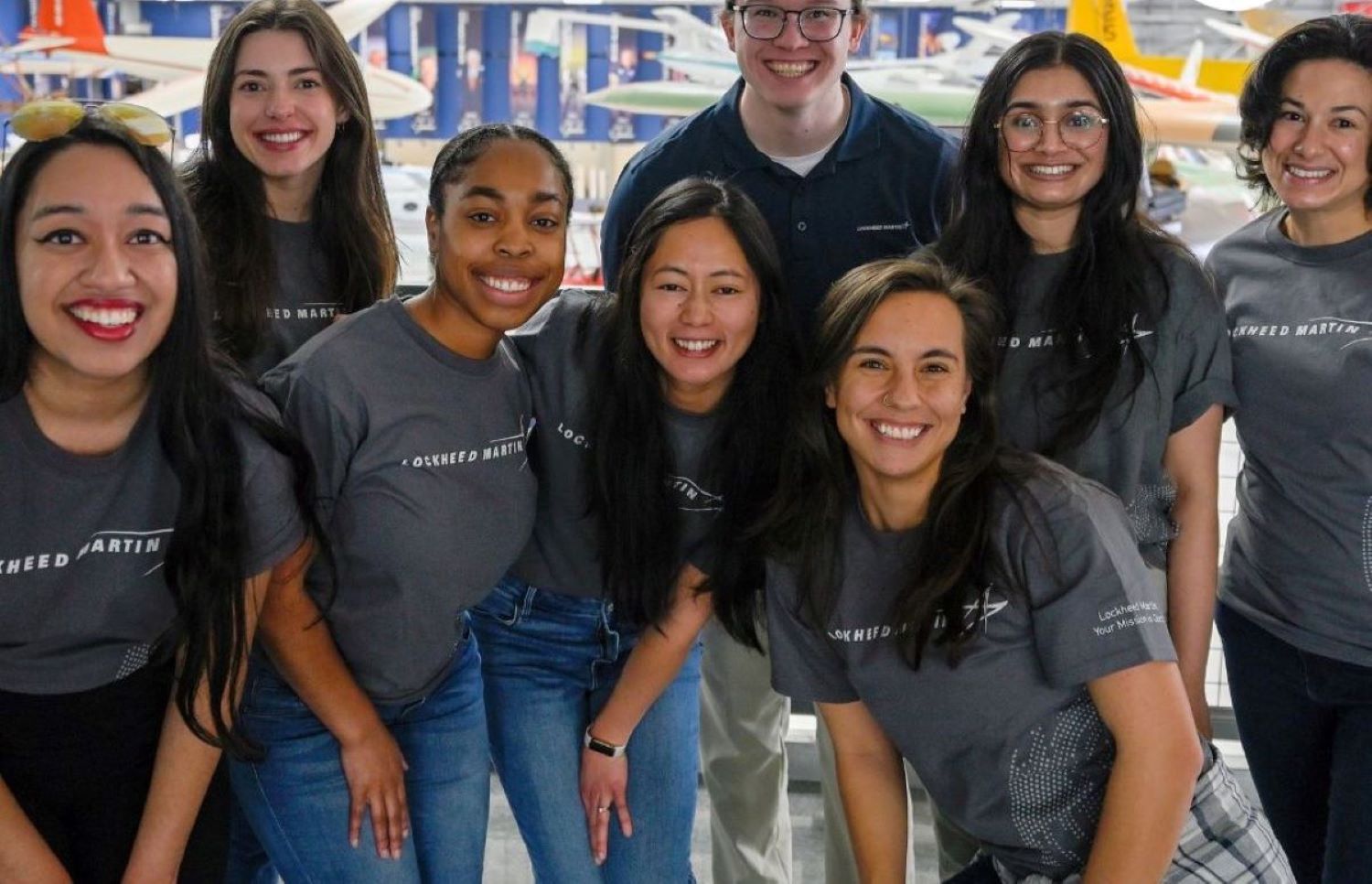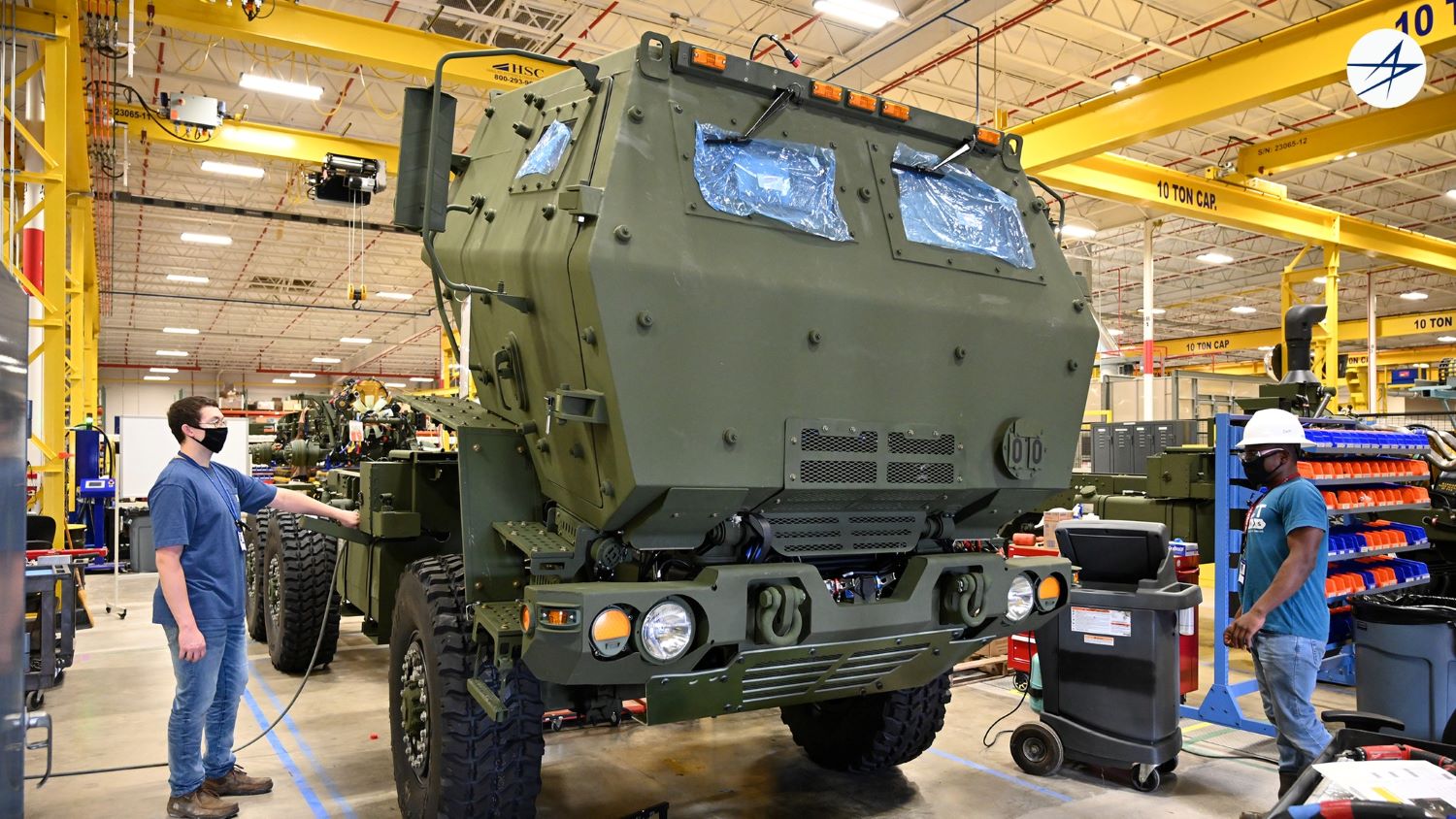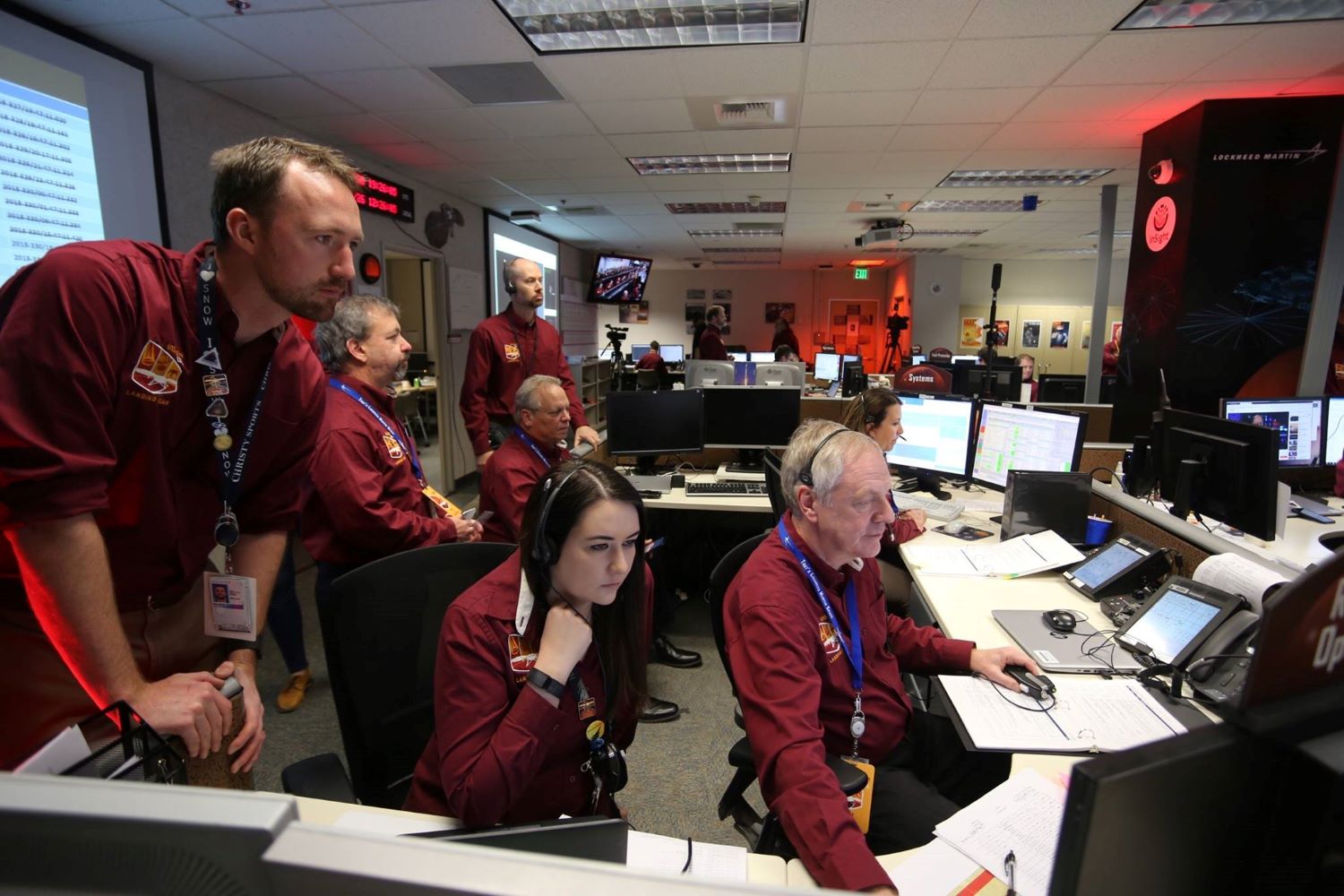Charting the Path to ‘Too Big to Fail’: Lockheed Martin’s Journey to Dominance Today

In the vast landscape of the aerospace and defense industry, few names command as much respect and recognition as Lockheed Martin. With a storied history dating back to its founding in 1912, Lockheed Martin stands today as a towering behemoth, an amalgamation of ingenuity and expertise resulting from the merger of Lockheed Corporation and Martin Marietta in 1995.
Through a relentless pursuit of cutting-edge technologies and unwavering commitment to excellence, the company has risen to become one of the world’s largest defense contractors, solidifying its position as an indispensable pillar of global defense and aerospace advancement.
While hailed for its contributions to national security and technological prowess, Lockheed Martin is not exempt from scrutiny. The company’s involvement in classified projects, vast political influence, and ethical implications of its defense contracts have sparked debates and discussions around transparency and accountability.
In this exploration, we aim to unravel the multifaceted tapestry of Lockheed Martin – a company considered by many as “too big to fail.” Beyond its exceptional achievements, we shall also delve into the intricacies and complexities that arise from its status as a global defense giant, seeking to understand the broader implications of its role in shaping the world’s defense landscape.
Brotherhood Ardent Vision Take on Global Aerospace Hype
Lockheed Martin boasts a vast workforce, employing over 114,000 people, with a significant portion, approximately 60,000, comprising highly skilled engineers and scientists.
This dedicated team of professionals fuels the company’s commitment to research, development, and innovation, allowing them to consistently produce cutting-edge defense technologies that enable the United States military to stay two generations ahead of their adversaries.
One of the key factors contributing to Lockheed Martin’s prominence is its substantial involvement with the U.S. government. In 2021 alone, the company conducted business worth a staggering $47 billion with the U.S. government.
“Lockheed Martin looks like a classic case of a company that is too big to fail,” said William Hartung, senior fellow at the Center for International Policy and author “Prophets of War,” a recent history of the company which paints an unflattering portrait of the world’s biggest defense firm. “It supplies the Pentagon with so many kinds of weapons systems that it appears to have made itself indispensable.”

Before ascending to its current stature as a global aerospace and defense giant, Lockheed Martin’s journey began with the soaring aspirations of two brothers, Allan and Malcolm Lockheed, who founded Lockheed in 1912.
From their early days of flying kites along the California coast to their obsession with gliders, the Loughead brothers’ fascination with aviation knew no bounds.
As boys, Allan and Malcolm honed their aeronautical skills, eventually becoming mechanics. Their dream of building their own planes persisted, and they dedicated their spare time to this ambitious endeavor.
Their determination and hard work culminated in the construction of their first 80 horsepower 3-seat model G plane, meticulously crafted in a small garage at the intersection of San Francisco’s Pacific and Polk streets.
The Lockheed brothers’ financial resources were limited, but they refused to be deterred. They managed to secure a $1,200 loan from a taxicab company, and with about $2,800 of their own hard-earned savings, they painstakingly financed the rest of the production. With their plane ready for action, they seized an opportunity to offer sightseeing flights across the picturesque bay area, charging customers a modest fee of $10 for the thrilling experience.
Seizing the Advantage – Sensing Opportunities in the Battlefield
In the early 1916, as World War I loomed on the horizon for the United States, the newly formed Lockheed aircraft manufacturing company found itself embarking on a journey that would shape the course of aviation history.
Operating as a small ragtag group of just a handful of employees toiling away in a Santa Barbara garage, they resembled a Silicon Valley defense industry startup of their time. The primary focus was on improving the F1 flying boat, initially intended for commercial sightseeing tours along the California coast. However, they soon recognized the military potential of their creations.
Understanding the significance of their work for potential military applications, they offered their manufacturing plans and services to the U.S. military, providing quotes for any potential trouble with foreign powers. Their first instance of lobbying occurred when Alan Lockheed traveled to Washington D.C. on April 6, 1917, seeking a major defense contract for their F1 aircraft.
Although the effort did not result in the desired outcome, it did not end in failure. Instead, they secured a contract to manufacture two Curtis HS2L flying boats, and the Navy showed interest in testing their Afflon. This marked Lockheed Martin’s first official defense contract, and they quickly realized the profitability of working with the military.
Expanding their operations, the contract allowed Lockheed Martin to hire up to 85 workers, working tirelessly on wartime production schedules seven days a week. They even employed a shift supervisor to help coordinate their new operation.
While the venture proved profitable, Alan Lockheed realized the importance of timing when it came to securing defense contracts. This valuable lesson would serve him well in the future.
Unfortunately, the end of World War I brought about a downturn in the airplane market, leading to a decline in demand for Lockheed’s warplanes. Consequently, the Lockheed aircraft manufacturing company shut down, and Malcolm went on to start a brake company, while Alan pursued real estate. However, Alan’s passion for aviation never waned, and he continued to design new airplanes in his spare time.
Climbing the Regal Ascent – Ups and Downs on the Road to the Throne
In 1926, Alan Lockheed and Jack Northrop, along with investor Fred S. Keeler, a brick and tile manufacturer, resurrected the Lockheed Aircraft company.
Working out of a humble pottery factory in Hollywood, California, they set their sights on a high-speed monoplane capable of traveling 1000 miles at a cruising speed of 185 miles per hour, with the capacity to carry up to six passengers. This groundbreaking plane, later named the Vega, gained immense attention and acclaim.
The Vega, a remarkable creation by Lockheed Aircraft, proved its mettle as it entered the annals of aviation history. In 1928, the famed explorer George Herbert Wilkins utilized the Vega for a groundbreaking expedition, making it the first aircraft to discover new lands.
During this expedition, Wilkins named a mountain range in Antarctica “The Lockheed Mountains,” as a tribute to the company responsible for crafting this extraordinary aircraft. This momentous flight caught the attention of the world, resulting in a surge of orders for Lockheed Vegas.

The success of the Vega was unprecedented. In 1927, Lockheed produced two Vegas, but by the following year, that number skyrocketed to 29, reaching 60 Vegas by 1929. The meteoric rise of Lockheed Martin’s aircraft production was fueled by the confidence of Wall Street investors, who saw the company’s potential and poured millions of dollars into Lockheed Martin’s stock, propelling its value to new heights.
As the orders continued to pour in, aircraft sales soared from $21 million in 1927 to an astounding $71 million in 1929. Lockheed Martin became synonymous with excellence in the aviation industry, and companies started placing orders for mail and passenger planes. Renowned pilots like Amelia Earhart and Wiley Post relied extensively on the Vega for their groundbreaking aviation endeavors.
However, the prosperity of Lockheed Martin encountered turbulence in 1929 when the majority shareholder, Fred S. Keeler, made the decision to sell the company to the Detroit Aircraft Corporation. The acquisition resulted in Detroit Aircraft purchasing 87 percent of Lockheed’s assets and restructuring Lockheed as a division of the Consolidated Venture.
Alan Lockheed, the driving force behind many of the company’s innovations, resigned in protest shortly after the acquisition. Despite his departure, he continued to design aircraft for other manufacturers and ventured into real estate, although his connection with the company bearing his name dwindled.
The Lockheed Corporation faced significant challenges in the 1930s, grappling with the economic impact of the Great Depression. The financial strain pushed the company to sell its assets for a meager $40,000 in 1932, a stark contrast to its previous soaring success.
Amelia Earhart’s mysterious disappearance while flying a Lockheed Model 10 Electra in 1937 coincided with a period of challenging business conditions for Lockheed Martin. The company was still in operation, but business prospects were not looking favorable.
A Government Intimate Affair – Lockheed Momentum Position During World War II
However, as the threat of a new war began to loom in Europe during the late 1930s, Lockheed found itself once again in a position to innovate and play a pivotal role in shaping the American defense industry.
Despite the potential for lucrative defense contracts during World War II, many business owners were initially hesitant to collaborate with the government due to small pre-war military defense budgets.
Between 1922 and 1939, defense spending averaged only $740 million, which accounted for about one percent of the U.S. GDP. A Fortune Magazine survey of business executives in October 1940 revealed that 77 percent had reservations about working with the government on defense contracts, fearing an anti-business stance from the administration in Washington.

However, Lockheed Martin, having already worked with the Army during World War I, recognized the significant opportunity that lay ahead. Prior to World War II, Lockheed Martin employed approximately 7,000 people. As the conflict escalated, the company’s workforce swelled to 94,000 by the height of the war.
During this time, Lockheed was technically owned and operated by brothers Robert and Cortlandt Gross, a leadership tenure that spanned from 1934 to 1967. However, the real driving force behind the company’s success was an aircraft design engineer named Clarence Kelly Johnson.
Clarence Kelly Johnson, often referred to as “Kelly” Johnson, played a pivotal role in shaping Lockheed’s innovative and trailblazing approach to aviation technology. His brilliant engineering mind and visionary designs earned him a prominent place in Lockheed’s history.
Johnson led the Skunk Works division, an advanced development project unit that remained top-secret during World War II, working on groundbreaking aircraft such as the P-38 Lightning and the P-80 Shooting Star, America’s first operational jet fighter.
With Kelly Johnson at the helm, Lockheed’s Skunk Works became a hotbed of innovation and technical expertise, contributing significantly to the war effort. The development of cutting-edge aircraft and advancements in technology spearheaded by Johnson and his team cemented Lockheed’s reputation as a pioneering aerospace and defense company.
Kelly Johnson’s innovative genius resulted in the iconic P-38 Lightning fighter aircraft, a twin-engine twin boom design that played a vital role during World War II.
Being the only aircraft in production throughout America’s involvement in the war, the P-38 Lightning was utilized across various Theaters of War, showcasing its versatility and effectiveness. It earned a remarkable distinction by shooting down more Japanese aircraft than any other plane in the U.S. Army Air Forces, solidifying its reputation as a formidable fighter.
Learning from their experiences in World War I, Lockheed Martin was well-prepared for World War II. The company ranked 10th among U.S. corporations in the value of wartime production contracts, illustrating its significant contributions to the war effort. Embracing the opportunity to work with the government, Lockheed Martin’s collaboration with the U.S. military allowed them to showcase their engineering prowess and technological capabilities.
Possess the One-stop Array of Instruments to Get to the Top
Over the years, Lockheed Martin has remained a prominent player in the defense industry, becoming the Pentagon’s largest contractor for much of the past decade.
In recent years, they have consistently secured a substantial share of the total defense contracts, with last year’s contracts amounting to an impressive $25 billion, representing nearly 9 percent of the total. In previous years, their share of contracts was even higher, reaching upwards of 12 percent.
Recognizing the importance of advocating for their interests, Lockheed Martin has been actively engaged in lobbying efforts. Since 2011, the company has invested a significant sum of $66 million in lobbying activities, making it one of the most active defense firms in lobbying, second only to Boeing, which has a large commercial business and spent $76 million, and Northrop Grumman, which spent $68 million, according to lobbying disclosures filed with the Senate.

Lockheed Martin’s unwavering commitment to cutting-edge aviation, military, and space technology has solidified its position as a prominent leader in the aerospace and defense industry. Not only does the company focus on pushing the boundaries of technological innovation, but it also actively contributes to charitable causes, exemplifying its dedication to making a positive impact on society.
In 2020 alone, Lockheed Martin donated over $20 million to various charitable organizations, demonstrating its corporate responsibility and commitment to giving back to communities. The company’s philanthropic efforts have helped support numerous causes, including education, veterans’ programs, environmental conservation, and community development. Through these contributions, Lockheed Martin continues to play an active role in making a difference in the lives of people around the world.
The significance of Lockheed Martin’s technology cannot be understated, especially when it comes to the lives of American soldiers. The advanced military systems and equipment developed by Lockheed Martin have played a crucial role in safeguarding the lives of countless servicemen and women.
From fighter jets like the F-22 and the F-35, equipped with state-of-the-art capabilities, to heavy-lifting helicopters and satellites, Lockheed Martin’s contributions have bolstered the United States’ defense capabilities, enabling the military to respond effectively to evolving threats.
“We have to get to the point where all of our products talk between one another. So, our F-35 communicates with our satellites which communicates with our Aegis, with our mission solutions groups so that you get a common command and control picture that brings all the capabilities we have into a single integrated operating picture,”
That’s what Steve Gerali, Lockheed Martin’s Chief Architect for the Business Innovation, Transformation and Enterprise Excellence (BITEE) organization said. He also added, “The more that we can work on allowing our products to communicate and work together, the more powerful those products become.”
One of the key areas of focus for Lockheed Martin is the development of Hypersonic missiles, which promise unprecedented speed and precision in military operations.
These advanced weapons hold the potential to revolutionize defense strategies and provide a decisive edge in any future conflicts. Additionally, the company has been actively working on developing systems to defend against Hypersonic missiles, further enhancing the nation’s security.
Lockheed Martin’s involvement in space technology is equally remarkable. The company’s contributions to space exploration have been instrumental in enabling breakthroughs such as NASA’s perseverance rover’s successful landing on Mars.
The cutting-edge technology developed by Lockheed Martin has allowed for the safe and successful execution of complex space missions, opening new frontiers in our understanding of the universe and the potential for future human exploration.
Bottom Lines
“We can take that legacy that Lockheed Martin has built in the past 100 years and leverage it to keep innovating for the next 100 years.” – said Steve.
The work undertaken by Lockheed Martin is of immense significance in preserving the United States’ position as a world-leading superpower. By continually advancing and innovating in the fields of aviation, military, and space technology, Lockheed Martin ensures that the nation remains at the forefront of global advancements. This capability not only ensures the security and safety of the American people but also upholds the country’s values of freedom, democracy, and progress.
As a beacon of innovation and excellence, Lockheed Martin plays a pivotal role in shaping the future of aerospace and defense, distinguishing the United States from authoritarian regimes such as China or Russia. With its tireless pursuit of cutting-edge technology and dedication to advancing the nation’s interests, Lockheed Martin embodies the spirit of American ingenuity and resilience, ensuring a brighter and safer future for generations to come.








